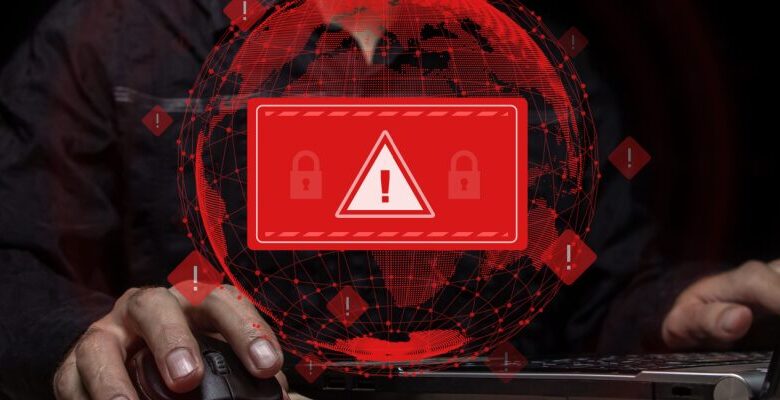Managed Detection and Response: Features, Working, and Uses | Spiceworks

- Managed detection and response (MDR) is defined as a proactive approach to cybersecurity that focuses on detecting and mitigating advanced threats and attacks within an organization’s network environment.
- Recognizing the limitations of traditional perimeter-based security defenses, organizations are increasingly shifting their focus toward detection and real-time response capabilities.
- This article explains the MDR process, its applications in various industries, and the pros and cons to remember before deployment.
What Is Managed Detection and Response (MDR)?
Managed detection and response (MDR) is a proactive approach to cybersecurity that focuses on detecting and mitigating advanced threats and attacks within an organization’s network environment. Unlike traditional security processes that primarily rely on preventative measures such as network firewalls and antivirus software, MDR emphasizes continuous monitoring, rapid detection, and swift response to security incidents.
MDR providers typically offer a combination of advanced security technologies, skilled cybersecurity analysts, and specialized tools to monitor and analyze network traffic, endpoints, and other critical infrastructure components in real time. By leveraging threat intelligence, behavioral analytics, and machine learning algorithms, MDR solutions aim to identify suspicious activities, malicious behaviors, and potential security breaches that may evade traditional security defenses.
Factors leading to the rise of MDR
Several trends have contributed to the evolution and adoption of MDR in recent years:
1. Sophisticated cyber threats
The cybersecurity landscape has become increasingly complex and dynamic, with cybercriminals continuously evolving tactics, techniques, and procedures (TTP) to bypass traditional security controls. As a result, organizations now require more advanced and proactive security measures to detect and effectively respond to these sophisticated threats.
2. Cybersecurity skills gap
Many organizations face challenges in recruiting and retaining cybersecurity talent with the necessary skills and expertise to defend against modern cyber threats. MDR services address this gap by providing access to highly skilled security professionals, threat hunters, and incident responders who can bolster an organization’s internal security team.
3. Regulatory compliance requirements
Regulatory mandates and industry standards such as the General Data Protection Regulation (GDPR), the Health Insurance Portability and Accountability Act (HIPAA), and the Payment Card Industry Data Security Standard (PCI DSS) require organizations to implement robust cybersecurity measures and demonstrate effective incident response capabilities. MDR solutions help organizations meet these compliance requirements by providing comprehensive threat detection, incident investigation, and reporting capabilities.
4. Increased complexity of IT environments
With the proliferation of cloud services, mobile devices, IoT devices, and remote work environments, the attack surface has expanded significantly, making it more challenging for organizations to secure their IT infrastructure. MDR services are designed to provide visibility and threat detection across diverse and dynamic IT environments, including on-premise, cloud, and hybrid environments.
5. Shift toward detection and response
Recognizing the limitations of traditional perimeter-based security defenses, organizations are increasingly shifting their focus toward detection and response capabilities. MDR aligns with this trend by offering continuous monitoring, threat detection, and rapid incident response to minimize the impact of security breaches and mitigate potential damage.
See More: Cybersecurity and AI/ML, Before the New Age of AI: Managed Detection and Response
Features of Managed Detection and Response
MDR solutions come in various types, from point solutions to 360-degree suites. Whichever managed detection and response system you implement, it’ll typically have the following features (or, at least, some of them, based on your business and IT needs).
1. Continuous monitoring and threat detection
One of MDR’s primary features is its ability to continuously monitor a network, endpoints, and other critical assets for signs of malicious activity. This involves deploying various security tools and sensors across the IT infrastructure to collect telemetry data such as network traffic, system logs, and endpoint behavior.
Through advanced threat detection techniques, including signature-based detection, anomaly detection, and behavioral analysis, MDR solutions can identify suspicious patterns and indicators of compromise (IOCs) that may indicate a security breach or an ongoing cyber attack.
2. Threat intelligence integration
MDR services leverage threat intelligence from various sources, including commercial feeds, open-source intelligence (OSINT), and proprietary research, to enrich the detection and analysis of security threats.
By integrating threat intelligence feeds into their monitoring and detection processes, MDR providers can correlate observed security events with known IOCs, malicious IP addresses, malware signatures, and attack patterns. This enables them to identify emerging threats, zero-day exploits, and advanced persistent threats (APT) more effectively, enhancing an organization’s ability to detect and respond to cyber attacks in real time.
3. Incident response and remediation
MDR solutions offer comprehensive incident response capabilities to help users effectively manage security incidents and mitigate the impact of attacks. In the event of a security breach or suspicious activity, MDR analysts promptly investigate the incident, gather relevant evidence, and determine the scope and severity of the attack. They then orchestrate an appropriate response strategy, which may include isolating compromised systems, containing the spread of malware, and remediating security vulnerabilities.
Throughout the incident response process, MDR providers work closely with a company’s internal security team to coordinate response efforts, minimize downtime, and restore normal operations as quickly as possible.
4. Forensic analysis and threat hunting
MDR services employ advanced forensic analysis techniques and threat-hunting methodologies to proactively search for signs of compromise and hidden threats within an environment. This involves analyzing historical data, conducting in-depth investigations, and performing root cause analysis to uncover the underlying causes of security incidents and breaches.
By leveraging threat-hunting tools and expertise, MDR analysts can identify stealthy threats, insider attacks, and persistent adversaries that may evade traditional security controls. This proactive approach enables the organization to stay ahead of evolving threats and prevent future security breaches before they occur.
5. Reporting and analytics
MDR solutions provide comprehensive reporting and analytics capabilities to help users gain insights into their organization’s security posture, threat landscape, and incident response performance. Through customizable dashboards, real-time alerts, and trend analysis reports, MDR platforms enable tracking key security metrics, monitoring the effectiveness of security controls, and identifying areas for improvement.
Additionally, these providers offer post-incident reports and forensic analysis summaries that document the details of security incidents, including the tactics, techniques, and procedures (TTP) used by attackers. These reports not only aid in compliance reporting and regulatory audits but also facilitate continuous improvement of the company’s security posture and incident response capabilities over time.
See More: Endpoint Security Is Not Enough to Thwart Advanced Threats
6. Behavioral analytics and machine learning
MDR solutions utilize advanced behavioral analytics and machine learning algorithms to identify abnormal activity patterns and detect sophisticated cyber threats that may evade traditional signature-based detection methods.
MDR platforms can establish baselines of normal behavior for an organization’s IT environment by analyzing user behavior, network traffic, and system activities. Any deviations from these baselines, such as unusual access patterns, privilege escalation attempts, or anomalous network connections, can trigger alerts for further investigation. Machine learning models continuously learn from historical data and adapt to evolving threats, improving the accuracy and efficiency of threat detection over time.
7. Endpoint detection and response (EDR)
MDR services include endpoint detection and response (EDR) capabilities to monitor and protect an organization’s endpoints, including desktops, laptops, servers, and mobile devices. EDR agents deployed on endpoints collect telemetry data such as process execution, file system activity, and registry changes to detect and respond to suspicious behavior indicative of malware infections, fileless attacks, or insider threats.
Through centralized management consoles, companies can remotely monitor endpoint activities, investigate security incidents, and initiate response actions such as quarantining infected devices or rolling back unauthorized changes.
8. Network traffic analysis (NTA)
MDR solutions incorporate network traffic analysis (NTA) capabilities to monitor and analyze network communications for signs of malicious activity and unauthorized access attempts. NTA tools can detect anomalous behaviors such as lateral movement between systems, command-and-control communications, and data exfiltration activities by inspecting packet-level data, flow records, and session metadata.
Real-time alerts generated by NTA systems enable organizations to quickly identify and respond to network-based threats such as APTs, botnet infections, and insider attacks before they escalate into full-blown security incidents.
9. Adversary simulation
Adversary simulation, also known as red teaming or ethical hacking, is a proactive cybersecurity practice that involves simulating real-world cyber attacks and adversarial tactics to assess an organization’s security defenses and readiness to defend against sophisticated threats.
It mimics the tactics used by real-world cyber adversaries to assess an organization’s defenses and identify gaps in security controls. By simulating realistic attack scenarios, MDR teams can help identify weaknesses, prioritize remediation efforts, and strengthen a company’s overall security posture against emerging threats.
10. Integration with security orchestration, automation, and response (SOAR)
MDR solutions integrate with SOAR platforms to streamline incident response processes, automate repetitive tasks, and orchestrate coordinated response actions across a security infrastructure. SOAR platforms enable one to create custom playbooks and workflows that automate incident triage, enrichment, and response actions based on predefined rules and decision criteria. By orchestrating activities such as containment, evidence collection, and remediation, a company can accelerate response times, reduce manual errors, and improve the efficiency of its security operations.
Additionally, integration with SOAR platforms facilitates collaboration between the company’s internal security team and third-party MDR providers, enabling seamless communication and information sharing during security incidents.
See More: DevSecOps Accelerates Incident Detection, Response Efforts
How Does Managed Detection and Response Work?
An effective managed detection and response process will typically follow 15 steps as part of its workings. These are:
Step 1: Deployment and onboarding
Begin by deploying MDR sensors, agents, and other monitoring tools across your IT infrastructure, including network endpoints, servers, and critical assets. During onboarding, you configure these tools to collect telemetry data and send it to the centralized MDR platform for analysis.
Step 2: Data collection and aggregation
MDR tools collect and aggregate vast amounts of telemetry data from various sources, such as network traffic, system logs, endpoint activities, and cloud services. This data is ingested into a centralized data repository for further analysis and correlation.
Step 3: Normalization and enrichment
The collected data undergoes normalization and enrichment processes to standardize data formats, enrich metadata, and contextualize security events. This involves mapping disparate data sources to a common schema, enriching events with additional context from threat intelligence feeds, and correlating related events to identify potential security incidents.
Step 4: Threat detection and analysis
MDR platforms employ advanced threat detection techniques, including signature-based detection, anomaly detection, and behavioral analysis, to identify suspicious activities and potential security threats within an environment. Security analysts analyze detected events to determine their severity, relevance, and potential impact on your organization’s security posture.
Step 5: Alert generation and prioritization
Detected security events are prioritized based on their severity, likelihood of exploitation, and potential impact on your organization’s operations. High-priority alerts are escalated to security analysts for immediate investigation and response, while low-priority alerts are queued for further analysis or disposition.
Step 6: Incident triage and investigation
Security analysts conduct initial triage and investigation of escalated alerts to determine the nature of the security incident, gather relevant evidence, and assess the scope and severity of the threat. This involves analyzing event logs, conducting memory and disk forensics, and correlating data from multiple sources to reconstruct the incident’s timeline.
Step 7: Root cause analysis
Analysts perform root cause analysis to identify the underlying causes of security incidents and breaches, such as software application vulnerabilities, network device misconfigurations, or insider threats. By understanding the root causes of security incidents, you can implement corrective actions and remediation measures to prevent similar incidents from recurring.
See More: How XDR Helps Protect Businesses from Serious Cyber Threats
Step 8: Containment and mitigation
Upon confirming a security incident, initiate containment and mitigation measures to prevent further damage and minimize the impact on your organization’s operations. This may involve isolating compromised systems, blocking malicious network traffic, disabling compromised user accounts, or applying security patches and updates to vulnerable assets.
Step 9: Eradication and remediation
After containing the security incident, proceed with eradicating the threat and remediating any security vulnerabilities or weaknesses that contributed to the incident. This may involve removing malware infections, restoring affected systems from backups, implementing security best practices, and updating security policies and configurations to enhance your organization’s defenses.
Step 10: Notification and communication
Notify relevant stakeholders, including executive leadership, IT personnel, legal counsel, and regulatory authorities, about the security incident and its potential impact on your organization. Transparent communication is essential to maintain trust and confidence among stakeholders and facilitate coordinated response efforts.
Step 11: Post-incident analysis and reporting
Following the resolution of the security incident, conduct post-incident analysis and reporting to document the details of the incident, including its causes, impact, response actions, and lessons learned. This information is used to improve your incident response processes, update security policies and procedures, and enhance your organization’s overall security posture.
Step 12: Continuous monitoring and threat hunting
Resume continuous monitoring of your IT environment and proactively search for signs of hidden threats and emerging vulnerabilities through threat-hunting activities. This involves conducting in-depth analysis of security telemetry data, performing periodic security assessments, and leveraging threat intelligence to stay ahead of evolving cyber threats.
Step 13: Performance metrics and KPI tracking
Track key performance metrics and key performance indicators (KPIs) to measure the effectiveness of your MDR program and evaluate its impact on your organization’s security posture. Metrics may include mean time to detect (MTTD), mean time to respond (MTTR), number of security incidents detected and resolved, and overall incident response efficiency.
Step 14: Security awareness training and education
Provide ongoing security awareness training and education to employees, contractors, and third-party vendors to enhance their understanding of cybersecurity best practices, security policies, and incident response procedures. Educated users are better equipped to recognize and report security threats, reducing the risk of successful cyber attacks.
Step 15: Continuous improvement and optimization
Continuously assess and optimize your MDR processes, technologies, and procedures to adapt to evolving cyber threats, regulatory requirements, and business needs. This involves conducting regular reviews and audits of your MDR program, incorporating lessons learned from past incidents, and implementing proactive measures to strengthen your organization’s security defenses over time.
See More: Is Extended Detection and Response (XDR) the Ultimate Foundation of Cybersecurity Infrastructure?
Uses of Managed Detection and Response: 3 Examples
Here are three applications illustrating how MDR can be used in different industries and its benefits:
1. MDR in financial services
In the financial services industry, where sensitive customer data and financial transactions are at stake, MDR is crucial in protecting against cyber threats and ensuring regulatory compliance.
Advanced behavioral analytics and machine learning algorithms analyze user behavior patterns and transaction data to identify anomalies indicative of fraudulent activities, such as account takeover attacks or payment fraud schemes. MDR platforms also generate detailed audit logs and compliance reports to demonstrate adherence to regulatory requirements, such as PCI DSS, GDPR, or SOX.
2. MDR in healthcare
In the healthcare industry, where patient confidentiality and data integrity are paramount, MDR helps safeguard electronic health records (EHR) and medical devices against cyber threats and privacy breaches.
MDR teams conduct proactive threat-hunting exercises to identify insider threats such as unauthorized access to patient records or inappropriate use of medical devices. MDR solutions also allow you to deploy endpoint detection and response (EDR) agents on medical devices such as MRI machines and infusion pumps.
3. MDR in manufacturing
In the manufacturing industry, where industrial control systems (ICS), computerized maintenance management systems (CMMS), and supply chain networks are interconnected, MDR provides visibility and protection against cyber threats targeting production systems and operational technology (OT) environments.
MDR solutions implement network segmentation and access controls to isolate critical production systems from corporate networks. They leverage anomaly detection techniques to monitor ICS networks for unusual behavior patterns, such as unexpected changes in process parameters, abnormal network traffic, or command-and-control communications.
In each example, MDR is tailored to address specific cybersecurity challenges and industry requirements.
See More: Building a Simplified Approach to Security with XDR
Pros and Cons of MDR
Managed detection and response can be a major investment for companies and should be implemented with a serious consideration of its pros and cons.
Pros of MDR
The top reasons to implement MDR include:
- Access to skilled security experts: You can leverage their knowledge and experience to augment your internal security team, fill skills gaps, and enhance your organization’s ability to respond effectively to cyber threats and security incidents.
- Ability to respond in real time: Its rapid response capability allows you to contain and mitigate threats quickly, minimizing the impact on your organization’s operations and reducing the risk of data breaches or financial losses.
- Greater scalability and flexibility: MDR solutions allow you to adapt to changing business needs and evolving cyber threats. Whether you’re a small business or a large enterprise, MDR services can be tailored to your organization’s size, industry, and risk profile.
- Usage of comprehensive playbooks: MDR platforms come equipped with predefined incident response playbooks and workflows. These playbooks standardize response procedures, ensuring consistency even in high-pressure situations.
- Increased efficiency: MDR solutions streamline security operations by automating routine tasks. By reducing manual intervention and human error, you can improve the efficiency and effectiveness of your security operations.
Cons of MDR
Though the benefits are many, the potential challenges of MDR are:
- Cost- and resource-intensive: Implementing and maintaining MDR services can be costly and resource-intensive. You may need to incur expenses related to subscription fees, licensing costs, hardware and software investments, and ongoing operational support.
- New complexities: Integrating MDR solutions into your existing IT infrastructure can be complex, requiring careful planning, configuration, and testing. You may encounter compatibility issues, deployment delays, and configuration errors.
- False positives and alert fatigue: MDR platforms may generate a high volume of security alerts and false positives, overwhelming your security team and leading to alert fatigue. Sorting through false alarms and low-priority alerts can consume valuable time and resources.
- Dependence on third-party providers: Entrusting your security monitoring and incident response functions to a third-party MDR provider introduces dependencies and risks, such as challenges related to vendor lock-in, service availability, and data privacy.
- Limited control and visibility: Outsourcing your security monitoring and incident response functions to an MDR provider may result in limited control and visibility over your organization’s security operations.
See More: How Enterprises Can Secure Endpoints With Extended and Managed Detection and Response
Takeaway
MDR continues to evolve in tandem with the ever-changing cybersecurity landscape. With advancements in artificial intelligence, machine learning, and automation, these solutions will become even more adept at detecting and responding to sophisticated cyber threats in real time, empowering companies to stay one step ahead of cyber adversaries.
It’s crucial to remember that MDR is not just a technology solution but a strategic partnership. By investing in MDR capabilities, you can fortify your organization’s security defenses, inspire confidence among stakeholders, and build a safer and more resilient digital future.
Did this article explain everything about managed detection and response? Tell us on Facebook, X, or LinkedIn. We’d love to hear from you!
Image Source: Shutterstock



